#pop culture paganism
Text
C'Thia, Surakian Philosophy, and Vulcan Polytheism

While most would consider Surak to merely be a philosopher and reformer, thereby removing any hint of religion from the discussion and forming instead an idea of both Surak and his philosophy as being, at best, atheistic or agnostic, and at worst, being anti-theistic, I have to strongly disagree with this assessment. Especially when it's used as proof to claim that modern, post-Awakening Vulcans are also at best atheistic or agnostic, and at worst anti-theistic. I believe this comes about due to a commonly held misconception that religion in and of itself is anathema to science, to progress, to intelligence, and therefore, to logic itself. This is, of course, a blatantly false binary and we are shown over and over again in canon that while Vulcans place a great importance on science, education, intellect, and logic, they are also a very spiritual people. Most of the important locations on Vulcan that we see in canon tend to be temples, sacred mountains, or holy ruins. Leaders tend to be high priestesses. Meditation is almost universal for Vulcans, and while it can be argued that it is very much a mental discipline as well, meditation was birthed, and continues to find its roots, in spirituality, and at its heart, is a spiritual discipline. Meditation, after all, was not invented by scientists, but by monks.

In the episode of the Animated Series, "Yesteryear", Spock tells Sarek that he is merely passing through ShiKahr on his way to the family shrine to "honor our gods". This one line proves to me that, at least for Spock, there is no incongruence between his modern Surakian belief and practice of C'thia (commonly this is translated as just "logic" but a more accurate Vulcan translation is "reality-truth") with that of traditional Vulcan polytheistic religious practice. One can assume that this is not, however, unique only to Spock, seeing as shrines require some semi-regular maintenance and he very rarely visits his father's homestead so it is unlikely that Spock alone is the one who maintains them. Sarek also is unsurprised by Spock's actions, which suggests a kind of normalcy to it. One does not get the impression that Spock is doing something rebellious by performing religious rites to Deities.
Likewise, in the Voyager episode, "Hunters", Tuvok receives a letter from his wife. In it, she tells him that she and their children have asked the priests at the Temple of Amonak to say prayers for Tuvok's safe return from the Delta Quadrant. Prayer requires something to which a person prays to and the assumption here is, again, the existence of Vulcan Deities as well as devotional practices targeted toward them existing even until the time of Voyager. While one of the purposes of prayer has to do with the person praying, as in, a benefit to prayer is that it gives the praying person something to do when they may not be able to do much else about a situation, and therefore T'Pel and her and Tuvok's children may be using it as a kind of meditative practice meant to give their grief and worry about Tuvok's safety somewhere to go that may then help them control it, I believe even this would still imply belief in the existence of Deities. One could meditate without the use of prayer involved but that was not the course of action that T'Pel took. She specifically made a trek to a sacred temple with the intention of saying prayers for Tuvok and told him about it, again, just as with Spock and Sarek, showing that there is something normalized about the action. Belief in the Gods and religious practice utilizing them is, therefore, not something performed only in the dark or in secret.

So, Vulcan polytheistic spiritual practice has continued past the Awakening and into the Vulcan Reformation. Is it the same as what it looked like to pre-Reform Vulcans? What's different? I wish we got more glimpses of Vulcan religion beyond mostly backdrop (while we are explicitly shown rituals and ritual locations in episodes like "Amok Time", "the Gambit" and many places in Enterprise, and in movies like "the Motion Picture" and "Search for Spock", very rarely do we see explanations for what the Vulcan lay people and priest(ess)es are doing and why) but that simply means that I instead get to make things up. Which is my favorite thing to do. So while the entirety of this post is built on a core of canon and information from Memory Alpha and Beta, as well as the Vulcan Language Database, most of what follows is my own musings and thoughts.
Firstly, in my research I've established that there seems to be two major pantheons within Vulcan spirituality, the Ka-ta-pak, or Inner Chorus, and the grouping I've named Ek-tam'a-ta, which is where I've placed every other named Deity not belonging to the Inner Chorus. The Inner Chorus, being made up of Deities that seem much more akin to emotional archetypes, become a much more thorny topic to consider when it comes to reconciling the worship, or, at the very least, acknowledgement of these Beings with the rigorous control of emotions that is to be expected within the Surakian cult of C'thia. As such, they are what I plan to focus on here.
The Inner Chorus is made up of the following Deities: Tel-Alep and Alep-Tel, Kir-Alep and Alep-Kir, Valdena and Dena-Vel, Kal-ap-Ton and Tyr-al-Tep, and Ket-Cheleb. Other than the last Deity, each is a part of a pairing where one represents the lighter, more acceptable form of a suite of emotions, whereas the other is the darker, shadow side. It's a concept similar to reading Tarot cards, where a card's reversal typically points to the darker reading of the themes the card communicates when right side up. For example, Valdena is famously the love Goddess and rules over emotions such as joy, beauty, fullness, pleasure, etc, whereas Dena-Vel, her shadow twin, rules over the darker side of love, namely concepts like possessiveness, covetousness, envy, domination, etc. What I would posit as probably one of the fairly radical reforms within Surakian thought, is the idea that C'thia is meant to subjugate and control both sides of what the Inner Chorus represents, not just the shadow side.
Isn't it illogical, however, to worship archetypal manifestations of emotions that one is trying to suppress? This was the big question that came out of my exploration of Vulcan Deities and led me to conclude that there is a difference between how Vulcans interact with Ek-tam'a-ta Deities vs the Ka-ta-pak, wherein the former is treated much more like how one stereotypically interacts with Gods, ie with reverence, worship, offerings, prayers, etc, as well as an understanding of the Deities being Beings outside of the mind in their own rights, while the latter is much more localized and symbolic. The Ka-ta-pak are not so much outward Beings, as they are emotional symbols and touchstones, metaphors to be focused on in meditation rather than as Gods to be worshipped.
Even the name, the Inner Chorus, suggests this kind of community of emotional beings, of aspects of the interior Vulcan mind, and furthermore, points to a need for a harmony amongst them. It is my thought that the Ka-ta-pak are less like sentient beings with personhood and more like the Platonic ideal of the emotion they represent. They are the emotion in its most perfected form and by experiencing this, experiencing the presence of this being, this outward-focused inner spirit, in the relative safety of meditation, the average Vulcan is able to meet that emotion and learn how it manifests within their own body and mind. In this meeting, they are able to name the emotion, learn it, experience it, and understand how to master it so that when they experience it outside of meditation, they need not be conquered by it and brought into chaos but instead are able to hold to order and logic in the face of it.
In the Enterprise episode, "Fusion", we are shown that Vulcans don't typically dream and that meditation has usurped the role that dreaming would usually take in the Vulcan psyche. It follows, therefore, that they process the emotional stimuli of the day through meditation and that symbolism, which is an important language for the sub-conscious and the language that dreams are written in, would probably play a role in that. Thus, the use of the Inner Chorus as a symbol of focus, as the emotional tangle that one seeks, through meditation, to sort out and bring order to, makes sense. I believe that this constitutes some of the work of t'san s'at, or the intellectual deconstruction of emotions that Surak preached. T'san s'at is the study of one's own emotions, and the effects these emotions have over one's actions. The peace and tranquility that lies at the end of t'san s'at is the goal of every Surakian Vulcan, and is a lifelong aspiration. It is through working with the Ka-ta-pak with this goal in mind that brings these ideas together.

Another idea I found interesting about the Ka-ta-pak is that the names of the Deities match the names of the other planets within the Vulcan solar system (according to the Memory Beta article that I believe is based on a Trek inspired ttrpg). A solar system, with its constant routine of stable orbits and cycles, would be an obvious metaphor for the idea of Order. The Inner Chorus strikes me, then, as the microcosm within the Vulcan mind/spirit as connected with the macrocosm of the living universe around them. It is the connection between the Vulcan mental and katric interior space and the exterior physical space. Just as the solar system is in constant harmony, subjugated to the laws of gravity, order, and simply the natural mechanisms of the living universe, one's own interior system should likewise be ordered. That it is called an inner chorus is very telling to me, since when choruses are working correctly, they are making music in harmony, just as the broader cosmos makes the music of the spheres, which is the sound of mathematics purified. It is the goal of every Surakian Vulcan to harmonize their inner chorus (part of which involves meditating on the form of the Inner Chorus) with the music of the macrocosm. In this, I believe the mind, or the reasoning capacity, represents a kind of conductor, who directs the inner chorus of emotions to properly allow for the production of music. The music produced by this harmony is C'thia, which is the same substance that keeps the planets in their orbits and the universe ticking onward.

This post is getting a bit long but there's one last thing I want to talk about and that would be Surak himself. As mentioned earlier, there is a common misconception I've seen that, again, makes Surak some kind of radical atheist philosopher who, in stomping out the violence and ignorance that marked the culture of his planet, must also have gotten rid of its religion, not just superstition or conservativism but religion more generally. Again, this comes more from the mistaken belief that spirituality and science are necessarily at odds. But what we see of Surak doesn't actually support this erroneous belief. Instead, one of the things that Surak is famous for is his pilgrimage. A pilgrimage is a religious journey undertaken for religious purposes. Surak set out to visit many religious orders and temples, before traipsing into the wilderness in places like Vulcan's Forge and Mount Seleya, to learn from and connect with the various priest(ess)es, as well as to connect in solitude with his own mind. C'thia is always shown as a revelation. Surak perceives it for the first time and discerns its meaning while on pilgrimage, while in meditation, while studying spiritual truths. He discovers it, not in a laboratory, but in deep contemplation on a mountain peak. Thus, Surak strikes me as much more akin to a Hindu yogi or an enlightened New Age seeker than he does a Richard Dawkins type. He doesn't dismiss the spiritual lessons he learns from visiting the other religious orders but instead incorporates them into his new cult. I think it's this incorporation of c'thia with traditional polytheism within Surak's own spirituality that allows for modern Vulcans to do the same.
In conclusion, anyone who claims that the post-Reform Vulcans shown in canon are atheists have not been paying attention to the actual canon, first of all, and secondly, are doing nothing more than showing their bias toward the science vs religion binary. I think the Vulcans are a little too smart to fall for this dichotomy, and they are certainly aware of the need for a philosophy to be an open one, if it's to be sustainable at all. I think having access to the neverending mystery of space, peopled as it is with many different kinds of beings, has allowed the Vulcans to be open-minded toward religion and the existence of Gods and other numinous beings. After all, they fully accept the existence of katra and thus, souls, spirits, and the idea of beings existing without bodies. It is not an illogical leap to suppose that since animating spirits (ie souls that are housed by and animate a body) exist, other kinds might also, including Deities. And since Vulcans possess a psionic system, capable of the extrasensory perceptions involved in their version(s) of telepathy, they may be able to perceive these spirits telepathically, even when psi-null folks may not be able to.
So, I don't think Vulcan polytheism is relegated to some point in the planet's distant past but instead continues, alive and well, into the post-Awakening world.
#star trek#pop culture paganism#vulcan polytheism#vulcan religon#vulcan spirituality#vulcan culture#vulcan#vulcan mythology#surak#surakian philosophy#c'thia
104 notes
·
View notes
Text
A Lesson on Learning
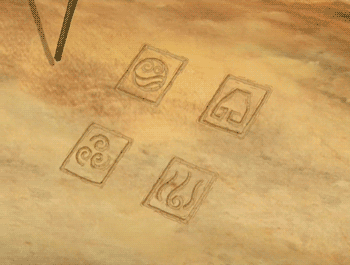
Brought to you by “Avatar: The Last Airbender” and Uncle Iroh
In season 2′s episode ‘Bitter Work’ Iroh is teaching Zuko how to bend lightning and the lesson that he uses to do so is one that can be applied to LITERALLY anything.
The lesson goes thus:(Quotes from IMDB)
Uncle Iroh: [Draws Fire symbol in the dirt] Fire is the element of power. The people of the Fire Nation have desire and will and the energy and drive to achieve what they want.
Uncle Iroh: [Draws Earth symbol] Earth is the element of substance. The people of the Earth Kingdom are diverse and strong. They are persistent and enduring.
Uncle Iroh: [Draws Air symbol] Air is the element of freedom. The Air Nomads detached themselves from worldly concerns and found peace and freedom. Also, they apparently had pretty good senses of humor.
Uncle Iroh: [Draws Water symbol] Water is the element of change. The people of the Water Tribes are capable of adapting to many things. They have a sense of community and love that holds them together through anything.
Prince Zuko: Why are you telling me these things?
Uncle Iroh: [Draws straight lines separating the four symbols] It is important to draw wisdom from many different places. If you take it from only one place, it become rigid and stale.
Uncle Iroh: [Draws a circle around all four symbols] Understanding others, the other elements, and the other nations, will help you become whole.
Prince Zuko: All this four elements talk is sounding like Avatar stuff.
Uncle Iroh: It is the combination of the four elements in one person that makes the Avatar so powerful. But it can make you more powerful, too.
image

Now, this can obviously be applied to witchcraft and magic in general, paganism or any spiritual path, our moral paths, our personal lives and any work that we do. Because Iroh is right (when is he not?).
If we simplify our focus to one thing, one source, one single pillar of thought, we limit it and it becomes rigid and stale as he said, but also weak and fallible. If we instead learn to draw inspiration, wisdom and knowledge from differing sources, seeing how they work together as a whole, we strengthen the foundation of our own beliefs, our own knowledge.
This most obviously applies to studies of the elements, as it is the entire premise of the show and the quote itself. From that we can draw so many varied conclusions though! How do the above elements work together? Is there overlap between any of them? Do they together form other things- or change each other into the other elements? How do they impact one another? How can studying one in turn help you to study the others?
I digress… It’s just one of my favorite quotes from the show. But if you’d like me to extrapolate on this some more, just let me know or message me and we can discuss it! :)
M.G.
The Basil Druid
#pop culture magic#pop culture witchcraft#pop culture paganism#pop culture witch#pop culture pagan#pop culture lessons#lessons in pop culture#magic#magick#witch#witchcraft#pagan#paganism#witchy#Witchblr#my content#my original content#original witchcraft content#avatar spell series#avatar series
230 notes
·
View notes
Text
the pagan urge to work with the mothman
#only problem is the question whether mothman is real or not#because depending on that he's either an egregore or a spirit or something else entirely#pagan#paganism#paganblr#mothman#cryptid#polytheist#deity work#spirit work#egregore#pop culture paganism#????
104 notes
·
View notes
Text
Pop Culture Witchcraft and the Importance of Being Cringe

Cringe has become a bit a loaded word nowadays, being at first a word to describe feelings of second-hand embarrassment, arguably from failings to impress others or to raise one's social capital. Think for example failed motorsports stunts, falling into pools with a tray full of fruity drinks or even worse; someone trying to impress a crush by molding themselves into someone they only think the other party would like via baseless assumptions. Your body recoils, seeing a dirt biker tumble down the course. Your stomach sinks, watching someone plunge into the shallow end of the water. You squirm watching someone try to convince their crush to go out with the facade they made. That I would describe as "empathetic cringe"; a reaction based on witnessing something you do not wish upon yourself like physical harm or embarrassment.
The modern definition of cringe however, is a different beast entirely.
Using the Urban Dictionary meaning as defined by user Screech McGee, "Before the internet trolls changed the meaning of this word, "cringe" was a verb used to express embarrassment or disgust. Now, this word is mostly used to define something that you dislike or do not understand. Internet trolls use this word as an insult towards people in fandoms, with bad grammar, or both combined. Trolls also use this word to describe memes on some occasions."
Doing a quick search on YouTube or Tiktok for "cringe" gives you an array of oddities to the average eye; people dressed in rainbow-colored wolf fursuits, teens expressing their love and attachment for their favorite anime character, or perhaps someone outwardly displaying behaviors considered aneurotypical. They fall outside societal norms and standards of behavior. They aren't perceived as "normal or acceptable" to the standards set by white-cis-het-able bodied-neurotypical persons and communities.
But in it, the furries, the fandom-lovers, and even the "neurospicys" are harming none. They're doing what they want.
Sounds kinda familiar doesn't it?
Lets loop around to what you're probably reading this rant for; the witchy reasons.
Witchcraft as a practice, is already an outsider to most societies, especially to those predominated shaped by Protestant Christian beliefs. It's already something outside the norms. Even back during the hey-day of reality tv shows like Wife Swap, those who weren't considered Christian or followed more "earth-based" religions and lifestyles were presented as the butt of the joke. And while witchcraft and non-Christian beliefs as a whole have becoming more popular nowadays, it's still considered something outside the norm or in the minority of persons identifying themselves as witches and pagans voluntarily.
So we're already ticking one "cringe" box according to societal norms
Chaos Magic as a whole is based on using belief as a tool or as a fuel source to workings to enact change or bring it about to oneself or to the environment around them as a whole. Hence the whole "nothing is true, everything is permitted" thing in that there's no one strict set of rules to make something work.
Pop Culture Witchcraft and Pop Culture Paganism deriving from chaos magic, while with several theories as to how it works, the crux is in "belief", in energy fueled into something or even someone.
Going off the egregoric model, egregores are formed and fed by the energy (ie: belief) fueled into them. This is where fandom comes into play. Fandom is fueled by passion, by love, by admiration, by forming community around shared likes, interests, or even dislikes. Fandoms are funnels for that collective energy, passion, creativity, etc.
And to some, pouring in so much joy, passion, fervor, and creativity can be seen as something out of their grasp of understanding; something that they're the outsider to and not the main target audience of. It's "not made for them". Therefore it's deemed as "cringe" underneath that definition.
But why deprive oneself of joy just for the approval of others?
Why force oneself to conform to arbitrary rules and norms?
As long as your joys and passions affect only yourself and do not harm others directly, why shield it from view?
To get the most out of a pop culture practice, it's good to have it based on what you're passionate about; what you're well-versed in. What gives you that fuel or belief. What brings you joy and makes you want to pursue things even further.
So be cringe, be passionate, be able to go on a dang unprompted 20minute rant about the lore to your favorite failed RPG series. Be able to show a whole dang portfolio of your self-insert smooching your favorite character on the cheek. Be absolutely, unapologetically passionate about something and see what happens. See what happens when you drop the worries of how others perceive you.
So stay safe, have fun, be cringe, be free, stay spooky.
#pop culture paganism#pop culture witchcraft#pop culture magic#pop culture witch#eyestrain cw#gif warning#I spent like an hour writing this and didnt have the spoons to edit#anyway this was inspired by a recent route in my path involving more horror based sources and entities so heehoo
126 notes
·
View notes
Text
bun's week-long pop culture spirit work exercise:
monday: create a playlist for a pop culture spirit. play it for them and write down any feelings, sensations, or events that emerge.
tuesday: look up their iconography and anything inspired by them. take notes, and see if you can make a sigil from what is significant to you.
wednesday: look at a list of their tropes. write ones that stand out to you down, and see how you can judge what they might reside over, their personality, try to conclude some information. if you need confirmation or validation, see if you can confirm with a form of divination.
thursday: write a prayer inspired by one of the songs, their iconography, or their tropes. say it (or think it) to them while imagining the sigil you made for them, and write down any feelings, sensations, or events that emerge.
friday: it's time for offerings! based on what you've figured out, use your best judgment for deciding what you think they'll like. you can use a perishable offering, a votive offering, devotional acts, whatever suits! write down anything you learn during.
saturday: do a reading with them. this will require a divination deck, a pendulum, charms or bones, a playlist, a book, or anything you're comfortable using to talk to them. take this as a conversation, rather than an interview - talk to them as you get your responses, and write down anything that you find out.
sunday: finally, it's time to write down a correspondence list or basic guide. write down anything of importance. i tend to write down information about them, concepts they reside over, signs and symbols, offering ideas, and devotional acts - but go bananas here! jot down what you think is important.
bonus ideas: hanging out with their energy, doing a spell inspired by them, doing a spell with them, the sky's the limit! you don't have to do any of these activities if you don't want to, but i just thought i'd shed some light into how i organise myself with spirits and organise my thoughts regarding them. have fun!
47 notes
·
View notes
Text
I got another witchy FAQs question so I want to go ahead and share it.
This time, we're talking some basic chaos magic with different types of thoughtforms!
Please note that I am not an expert in chaos magic, nor do I consider myself a chaos magician, so feel free to (kindly) leave feedback or corrections as needed. ^^
Thoughtforms 101
Definition of Thoughtform: Thoughtform is a catch-all term from any entity that was created with or by human thought (conscious or otherwise).
Types of Thoughtforms: Common thoughtforms include sigils, servitors, thoughtform companions (aka tulpas), daemons, and egregores.
Sigils: Most folks who create sigils and use sigil magic probably don't think about sigils as a type of chaos magic or a thoughtform. However, sigils actually do fall into this category. Think of a sigil as being like a simple computer program that's powered by your mind. You give the program a basic function (such as protection or prosperity) and the magical "coding" of your intentions allows the sigil to carry it out.
Servitors: If sigils are basic computer programs, then servitors are robots. They're not sentient per se, as they still require the coding and programming that comes with intention and magical energy. Yet they're much more complex than a sigil and can carry out higher-level functions & multiple tasks (e.g., drawing in people to shop on your Etsy page for prosperity, or actively guarding a space or casting a magic circle for protection).
Thoughtform companions: The widespread term for this type is "tulpa," and creating/having one of these thoughtforms is commonly referred to as "tulpamancy." Since there's also a widespread controversy over these terms, I don't use them myself. I say "creating or working with a thoughtform," and I'll refer to the entity as a thoughtform or thoughtform companion. Regardless of the terminology or beliefs behind this category, they are defined as a separate consciousness created by the thoughts and actions of a human. The human is typically referred to as the "host," since the companion is typically treated as its own separate consciousness. These are fully sentient, autonomous beings with their own thoughts and feelings. They're generally created, either intentionally or not, as friends for the host (hence my personal terminology for them).
Daemons: This category is similar to a companion, but with a different origin and function. Daemons have been documented since ancient Greece, to my knowledge. A daemon is also a sentient entity, however, they are not created intentionally by the host (although they can be brought to the forefront by the human in question). A daemon is instead a conscious entity created by, and representative of, the human being's subconscious mind. They typically serve as helpers and mental guides for the human. They are not considered separate entities; instead, they're part of you.
Egregores: These are essentially the AIs of the thoughtform world. Whereas companions and daemons exist within the human mind, egregores are similar to servitors and sigils - created by the mind, but separate from it. Egregores are often made or manifested by a group of people intentionally for a purpose. E.g., a coven may create one as a guardian or a spiritual guide. They're also often created by accident from widespread symbols - for example, branding. And nations. Every time somebody posts a picture of the Starbucks logo, you're most likely feeding an egregore, according to one theory I've heard. Do I believe that personally? Not sure. (I do have an exact source for this one available on request.) As far as I know, egregores exist with varying degrees of sentience, power, and free will depending on the individual scenario (much like artificially intelligent computers & androids in science fiction).
Pop Culture Entities / Deities: These are often referred to as PCEs or PCDs. I prefer the former but I often use them interchangeably. Some folks prefer to be more specific. For example, Raiden from Mortal Kombat is considered a god in that series, so many folks would consider him a pop culture deity. Whereas Dean Winchester is *not* a deity in Supernatural - so he could be considered a pop culture entity instead. However, this is up to the preferences of the individual entity & practitioner.
Differences between PCDs and Egregores: Egregores are ALWAYS created, intentionally or not, by human energy and thought. PCDs, on the other hand, can have a mixed origin sometimes. Some of them may be pure egregores, manifested on purpose or by accident. Others may be preexisting spirits - often nature spirits that are aligned closely to the fandom content - that latch onto a fictional work as a power source, and eventually fuse with it. And then another theory is that PCDs are *all* preexisting spirits or even deities wearing a mask - so for example, folks with this belief would say that PCD Marvel Loki is just Loki appearing in a different form/aspect. I personally think that all PCEs have a unique origin and I try not to make any assumptions.
Where do I fact check you and/or learn more?: Unfortunately, it is *really damn hard* to find good, solid information on pop culture work because it's very new. And while there's *lots* of info on chaos magic, you have to be careful to check the reliability of the source, much as is the case with demonolatry sources. Fortunately, Tumblr is a great source to find other pop culture practitioners. I personally also have *some* sources available for these topics on request, I'm just too lazy to dig through my Drive right at this moment. :)
#thoughtforms#tulpamancy#chaos magician#chaos magic#sigils#servitors#egregores#pop culture paganism#pop culture witchcraft#pop culture magic#witchy tips#witchblr
145 notes
·
View notes
Text
Stranger Things shifting method!
this method can be used for awake or sleep.
***
Firstly, find a good song that gets you worked up or excited (preferably an 80s song- I chose Footloose by Kenny Loggins) and put that on loop somehow. If you want to be extra, you can add affs on top of it. If desired, you could also use a song that reminds you of a certain character! (Or a playlist)
Ok so if you want to before you shift, do some breathing exercises. I like to inhale for 3, hold for 3, then exhale for 3. Try to release all the stress and tension in your body. Keep breathing on beat, at this point it’s ok if you wanna move around a little (or dance-)
This is where the actual method begins. (I took some inspiration from the official stranger things Rockin Robin book-) Try your best to visualize you either
A) Running through the halls of Hawkins High with your favorite character(s)
or
B) The song you chose comes on at homecoming or some type of dance and you dance with your favorite character(s)
If you want to make up your own scenario do that, these are just ideas!! Also it doesn’t have to be a romantic character, you could be Nancy’s age and dance with Dustin platonically like they do in the earlier season. Anyway-
You’re just going to want to really listen to the song. Push the visualizing until it’s realistic (if possible oFc) Really pay attention in the visualization how you are your characters feet and hands move, and what’s happening. What do you hear? Who are you running from, or what’s your thoughts while dancing?
Now you’re gonna affirm like hell while still visualizing as much as humanly possible. Are you singing the song in this scenario? If so, what does your voice sound like? Once again, just try and be there, realistic as possible.
It’s okay if you get distracted during this process, nuerodivergency makes it difficult sometimes -.-
“I am dancing with ____ and it’s ____ (fun, boring, etc.)”
“I am running from ___ with ___ and it’s ___ (exhilarating, impulsive, etc.)”
“My name is ___ and (another feature)”
Non Visualizing Option:
Basically what you’re gonna wanna do is complete the first and second paragraphs, then we’re gonna listen to the song for a second. Clear your thoughts as best you can, and get ready to affirm like crazy. (I hope this doesn’t require too much visuals) Next, we’re gonna affirm about either a friend or a partner- the main character (or one of them) you want to shift for. Describe them. What’s their hair like? Their smell, clothing, music taste, anything? Next, describe yourself. What do you look like or feel like when you’re with them? What makes you guys so good together?
I wann make it very clear that you can forget steps and change stuff. Everyone shifts different bro, stop worrying. It’s okay if you have to repeat a visual or if you want to stop visualizing. Please be safe while shifting and take care of yourself. I love you 💗
#eddie munson#stranger things#stranger things 4#stranger things volume 2#Eddie munson x reader#steve harrington#steve harrington one shot#steve harrington x reader#Eddie munson oneshot#st4#shifting method#shifting realities#quantum jumping#spiritual#pagan#Wicca#pop culture paganism#robin Buckley#robin Buckley x reader#billy hargrove#Vicky x robin#steddie#byler#ronance#lgbt#gay#pride#mileven#henry kreel#vecna
2K notes
·
View notes
Text
Attention anyone who identifies as pagan or a New Age belief system!
I have an assignment for school where I need to interview someone about their religious beliefs. I wanted to get some information about different pagan or New Age beliefs, so feel free to reblog and give your answers! (Don't feel like you have to give an answer for every question!)
Disclaimer: no names or identifying information would be used in my assignment.
Can you tell me your specific religious identity? (I.e. religious organization, faith system, general religious orientation, etc.)
What are the core beliefs of your religious orientation?
Do you have a place of worship or some other way you create a sense of community within your religion? Can you describe what a meeting within your religion looks like?
How do you “become religious” or a part of your religion? Is there a specific process? How does one "fit in" when it comes to your religion?
How did you personally choose to join your religious group?
Can you describe what it is like to participate in your religion with others of the religion as a group. What kind of group behaviors do you notice?
How does your religious orientation influence your political views?
Do you think racial identity has a role in how your religious group functions?
What are gender roles like within your religion?
In what way does your religion approach media? What role does media play in your religion? When relevant does the media accurately portray your religion?
Do you think that globalization has had an impact on your religion? If yes, how so?
Would you describe your faith as a New Religious Movement? If it is not, how does your religion address NRMs? If it is, how are you and your religion treated as an NRM?
How does your religion feel about marriage and family?
Can you describe if you've had any religious or supernatural experiences? (I.e. sightings or supernatural beings like ghosts or angels, communication with the dead, miracles, spiritual healing, clairvoyance, premonition, etc.)
What is your religion's relationship with science like?
How do you see the future of your religion in America and the world?
#paganism#pagan witch#paganblr#greek paganism#hellenic pagan#celtic paganism#pop culture paganism#pagan#baby witch#witchy#witchcraft#witchblr#witches of tumblr#witchythings#witch community#new age#metaphysical#spirituality#spiritual development#spiritual#magick#religion#religious
105 notes
·
View notes
Text

The Vocaism Neoreligion Masterpost !!
Starting off with some simple definitions ~
neoreligion : a religion created in much more recent years or times.
fult : meaning 'faux cult'- a group similar to a cult in that it is a high control group, though without forcing members to join; a consensual cult.
vocal synth : a 'program', usually represented by an anime-styled character, that can sing when given vocals to read and used with the compatible vocal synthesizer programs.
Now! Off to other important things.
Vocaism (vo-ka-ism) is a neoreligion or fult surrounding the worship of all vocal synths. I started this because of an intense, multi-year long hyperfixation on Hatsune Miku that made me view her as some kind of religious figure. I then began to grow a similar love towards other vocal synths, as they all helped me out of rough patches in many ways.
Here's some more specific details about Vocaism!
All UTAU, VOCALOID, SynthV, ETC. voice banks are individual 'deity' figures in this neoreligion. Fanloids and such are included in this!
Hatsune Miku is considered the 'main deity'- though that doesn't mean you should just worship her.
The beliefs of Vocaists coincide with certain Radqueer beliefs. (generally speaking; pro-para, pro-transid, and supporting others identities no matter how odd.)
Vocaism is based on love and support!
There is no specific way to worship in Vocaism, though listening to vocal synth music counts! (stream Binomi by Maretu- /silly)
Finally, feel free to send any questions you may have about Vocaism! I'd be happy to answer or help with anything ^^
#neoreligion#fultist#transid coining#rq 🌈🍓#radqueer#rq community#rq safe#radqueer please interact#rq please interact#radqueer safe#pro rq 🌈🍓#rqc🌈🍓#transid#pro radq#pro rq#pro radqueer#radqueers please interact#neoreligons#fictoreligion#tw fult#fult leader#faux cult#pop culture paganism#<- technically?#rqc 🌈🍓#radqueer 🌈🍓#rq 🍓🌈#🍓🌈#rq#radq
33 notes
·
View notes
Text
Basic Spirit Contact Etiquette
We’ve all seen some sort of ghost-hunting show in our lives, whether you were an avid Ghost Adventures fan or looking for scary things to watch on Halloween.
Here I’m whipping up a guide based on my 10+ years working with spirits on how to approach spirits respectfully and conduct yourself during contact whether in your own home or another location. This is focused on the types of spirits you may encounter while on a ghost investigation.
Before Contact
Consider who you are bringing with you. Take into account the location you are going to. If you are in the south investigating a plantation with a crew of all white men it might get a little tense and spirits will probably not like to respond, or respond harshly. Most of the time when shows actually think about this is if they are going to a prison or something and they bring girls to attract ghosts. Think about the spiritual background of the people attending. People of different backgrounds will react to and attract different types of entities.
Bring an offering. No one wants to do anything for free, so, give a little ‘thanks’ for the spirit's time and energy by bringing a gift. This can be almost anything! Do your research if you are investigating a specific location. Time periods, regions, specific people, and general areas can give you a clue on what to give. If you really don’t have much info, there are some good (generally) universal offerings.
Energy
Spirits need energy to manifest like I need energy to manifest myself out of bed sometimes. There are a couple of different ways to do this.
Candles are a great, cheap, easy way to offer a little energy to the spirits. PLEASE USE CAREFULLY. Make sure it has a stable support such as a holder if its a tapered candle or bowl if it is a pillar candle. Place a plate underneath to catch any wax runoff. I’m not going to go deep into candle colours, but the ones I personally use are purple for psychic boost, white for general and cleansing, black for protection, or blue for insight.
Crystals and rocks are a very common offering as well. This doesn’t have to be fancy, honestly a little quartz goes a long way sometimes. I personally have a pouch that has my stones for spirit contact specifically that I take with me to help me connect. I’m not going to go super extensive into the meanings of the crystals, you can find that other places, but these are my go to:
Labradorite: good for intuition and heightening senses
Spirit Bomb Quartz: I’m gonna be honest, I bought this mainly because it looked like a kidney stone I had, and it's one of Yusuke Urameshi's powers. But! It’s quartz so it’s always good to have around.
Azurite: good for mentality clarity and receiving messages.
Lapis Lazuli: My favourite stone <3. Good for connecting with inner guidance and intuition.
Music is great for bringing in spirits. Music is this incredible source of energy that carries over despite language, time period, or place. We all love music! Music can change a room in a minute. With music you are transported to a different time and place. This is great especially for spirits from older periods as it brings out a lot of nostalgia and emotion. Music also helps you get into the right headspace for communication as well.
Special objects are used all the time in ghost shows. Personal belongings such as jewelry, books, or clothes work well. Toys and crayons for children have been known to get them to come out and play. Things from the person’s time period or hobbies they did can help draw them in as well.
Food
Food is what gives us energy, and that doesn’t change much in the spirit realm either. Some good basic foods to bring are things like bread, fruit, baked goods, tea, or alcohol. I've found unless there is specific trauma around it, most spirits accept alcohol/cigarettes. Consider the time period or region of your location.
If you are investigating an old house or mansion, what food was popular at the time? What food was popular in the region? Try and give something that is familiar or would be a treat for them. Crack open a cold one for the spirits in your haunted bar, maybe offer up some peanuts or chips to bring the people in. Invite the lady of the mansion some nice tea or cakes and a chat.
If investigating a hospital/mental ward/prison, consider bringing something from the outside world. From my personal experience there is nothing someone wants more after a long stint in the hospital than a big burger. These people died eating the blandest shit imaginable (if they weren’t starved) so try something they wouldn’t have been able to have before. You don’t have to cook a wagyu beef steak, but cookies or sweets could go a long way in winning the favour of more shy or angry spirits. Bring milk and cookies to the children’s ward for a treat! Give the kids the sugar they couldn’t have in this realm!
What do spirits do with food?
Think about all the energy you put into cooking! All the stirring, kneading, heating, cooling, oils, herbs, meats, water, all has energy that gets combined and condensed when food is made. In my mortal opinion, spirits can feed off of this energy like we eat food. This is why I think some food offerings shrivel quicker. The energy from the cow used to produce the milk is carried down through the milking, pasteurization, packaging, distribution and receiving of one single bottle, gaining more energy each step of the way. Machinery used to make food feeds into that energy as well as the people who make it. You ever buy food and can taste the energy of the overworked underpaid worker who made it? Homemade items are usually the best, but store bought works just the same.
I also believe that the spirit can manifest to physically eat the food. This could either be an apparition or manifesting in the form of an animal.
If the food is store bought I might suggest cleansing it spiritually before offering it.
What to do with the food?
There are a couple options here. The easiest one is just leave it and let nature take its course. Liquids are usually poured on the ground or drain. If you are not on your own property I would suggest other methods such as burying(if it won't harm the wildlife) or (SAFELY) burning. I would use a big fireproof bowl such as a glass or metal mixing bowl (probably best if it’s not the one you use in the kitchen). If you are able to leave it overnight and come back to it, take note of any changes to the food! I like to keep my offerings out overnight but if it is going to spoil or stink then whenever you are done/they are done is fine.
Incense
Fire is an amazing element! Prometheus ain’t getting his liver eaten eternally for nothing! Fire can turn herbs and resins into magic in a flash. There’s a reason incense has been used for centuries in ritual practices all over the world. This can be done with sticks, cones, resins, bundles or loose. If you are going to burn incense PLEASE do this carefully as well.
Herbs and plants I usually burn are mugwort, wormwood, damiana, sandalwood, lavender, and cedar. This can be done either as a blend or individually. These are usually burned on a charcoal disk or as a stick if I can find one.
Resins are also common for rituals and spirit contact. There’s a reason Christians love to hotbox themselves with frankincense and myrrh. Shit works! These take a little more work so I suggest planning ahead if you are going to use these.
If you’re a cop you have to tell us!!! Ok now that the cops are gone this might sound wack, but in my experience, ghosts love drugs. I have yet to encounter a spirit who did not like weed. I have been told specifically to smoke weed with my spirits to help charge and cleanse them. Taking a rip from a bong invokes all four elements and helps center yourself. I wouldn’t suggest toking up in a haunted mansion, but a sprinkle of flower or kief on a charcoal disk can work as well. Use tobacco wisely as it is sacred to many Native cultures. Use Native grown tobacco and treat the herb with the respect it deserves. White supremacy and capitalism have tainted tobacco to be what it is now. If offering cigarettes, I suggest using the more organic ones. That being said, if you know a specific brand the spirit likes, opt for that one. I would suggest burying this offering as burning it may cause health issues, set off fire alarms, or leave a harsh smell.
Consider the type of haunting or spirit you are going to interact with. What do previous reports say the activity is? What type of location is it? What was this land before something was built here? I will briefly cover different types of hauntings and spirits that are common for ghost investigations. This is by no means all-encompassing but I’ve gathered this much from observations.
Active haunting. Classic ghost haunting. This type of spirit is aware of their surroundings to a degree. Usually conscious of the fact they are dead but not always. Common characteristics are:
Footsteps
Lights flickering
Feelings of being watched
Temperature drops
Hearing voices
Apparitions (full body, partial, shadow beings)
Mild physical activity (touching, doors closing/opening on their own, minor movement of objects)
Residual haunting. More common for places of tragedy, this type of spirit is usually not aware of their surroundings and instead are repeating moments of their life. Most characteristics apply from active hauntings to residual as well. The main difference is activity is done in a pattern. Common characteristics are:
Activity that comes in cycles or patterns i.e. specific times of day/year, specific places
Footsteps
Movement of specific objects
Voices or audio that does is not in response to the living word
Apparitions seen around same place/time
Poltergeist. This is the more active type of haunting. Most horror movies are based on this type. This type of haunting usually happens when a spirit is very powerful, usually angered or annoyed. The spirit is very aware of its surroundings. Common characteristics are:
Apparitions of all kinds
Footsteps
Doors slamming
Wall banging
Intense physical activity (things being thrown, moved, broken, or disappearing)
Physical presence (cold rooms, being able to push or grab people)
Behaviour change in people (more aggressive, sad, or just strange behaviour in general)
There is a lot of bleedover in regards to the categories, but it is usually determined by intensity and frequency of objects.
During Contact
Ugh, nothing pisses me off more than people back-talking ghosts when they are trying to make contact. You catch more flies with honey than vinegar folks. Here’s quick do’s and don'ts of making contact with spirits.
Do:
Bring an offering
Announce your presence when you come in and state your business. Be polite and introduce yourself. Spirits are more likely to warm up to you if they know what your doing.
Explain your equipment as you set it up or use it. Show them where to talk on recorders, I can almost guarantee someone from the 1800s probably doesn’t know about REM pods, EMF detectors, and video cameras. Explain using simple language but remember you are not talking to a child (unless you are). Demonstrations of equipment can help you test out your gear and get the spirits used to it. Evidence doesn’t start when you turn off the lights, record as you set up in case curious ghosts have things to say
Thank the spirit when it responds! If you ask for a sign and they bang the wall, thank them! Even if it’s scary stuff like slamming doors it’s still good to thank them.
Don’t:
Provoking the spirits by taunting isn’t going to do shit but get you cursed. Y’all know what I’m talking about. Early seasons Zak Bagans shit. ‘I’m not scared of you! Come out and face me! Show yourself coward! Attack me!’ Okay dude good luck with that attachment!
You are a mere mortal in the presence of something you don’t understand, don’t be an asshole about it. Talk to them like they are people because they probably were once! Talk in a respectful tone and be humble.
Don’t get mad if they don’t respond. Be mindful of where you are and what you’re talking about. If you are asking a spirit about a horrific event, accept that they may not want to talk about it. The type of haunting may not be fit for the type of investigation you’re doing.
NOT EVERY GHOST IS A DEMON OR EVIL. I’m so tired of every time someone has a negative interaction with a ghost it’s a demon. Maybe they’re just pissed off you’re in their space? Don’t throw around random labels just because you’re uncomfortable.
Debunking is always good to try but disregarding unexplainable things discourages spirits from trying. Or they may try harder and you might not like what they do!
Ending Investigation
Show your gratitude. Dispose of your offerings properly and thank the spirits for their time and energy. Clean up any mess you may have left.
Cleanse the space. Everyone likes to cleanse differently so I won’t go into it too deeply. Personally, I like to burn incense and use sound. I find ‘cleansing tones’ on Spotify and turn my bluetooth speaker upside down so the speaker is directly touching the surface. I believe this helps dispel negative energy. Other ways are using a bell, using cleansing water, visualization etc. Take only pictures, leave only footprints type of deal. This is especially important for places of violence or negative energies.
I advise walking out of the space backwards so nothing can follow you and cleansing yourself when you are done. Too often people go into these spaces, rip the bandaid off the spiritual wounds and then leave. It’s cruel to keep these spirits bound to these places for our entertainment.
Only YOU can prevent spiritual fuckery!

Note: the source leads to an outside blog that is co-run by me. Some of the words may have been changed in this edition, but this is not plagiarism, i wrote both! The URL is randomly generated for now but it is still a legit website. Feel free to check out the other posts!
#hyah!#spirit work#ghost investigation#paranormal#witchcraft#spirituality#occult#magick#witchblr#general magic#general#spooky season#spirit vessel#spirit keeping#witch tips#dvakh#pop culture magic#pop culture paganism#baby witch#eclectic witch
749 notes
·
View notes
Text

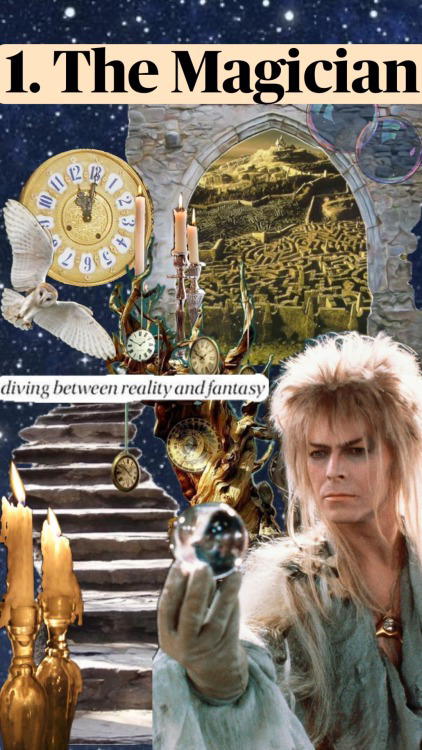
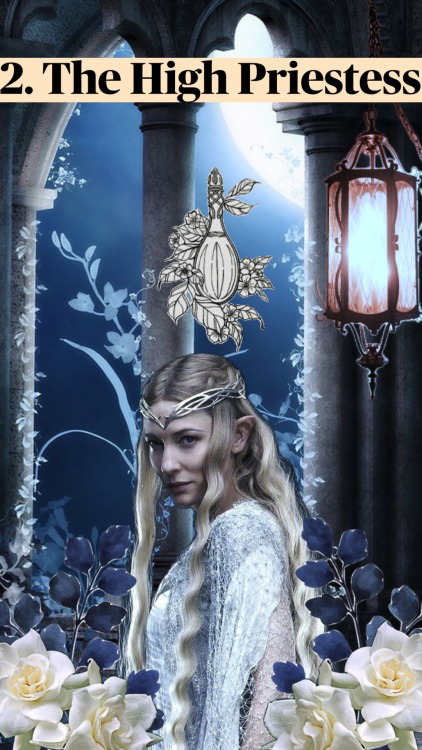


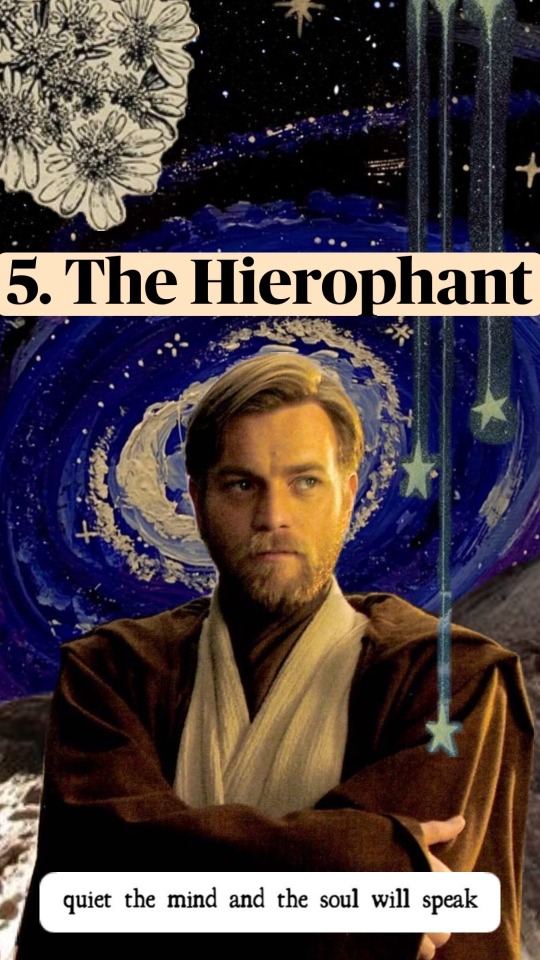



The first installment of my pop culture tarot collages series!
Featured in these cards:
0. Bilbo Baggins from The Hobbit as The Fool
1. Jareth from Labyrinth as The Magician
2. Galadriel from The Lord Of The Rings as the High Priestess
3. Arwen from The Lord Of The Rings as The Empress
4. Aragorn from The Lord Of The Rings as The Emperor
5. Obi Wan Kenobi from Star Wars as The Hierophant
6. Dazai and Chuuya from Bungou Stray Dogs as The Lovers
7. The Batmobile from Batman The Dark Knight as The Chariot
8. Bonnie Bennett from The Vampire Diaries as The Strength
#witchcraft#witchblr#pop culture#pop culture witchcraft#pop culture paganism#Pop culture tarot#tarotblr#witchy#pagan#witch#paganism#LOTR#Star Wars
72 notes
·
View notes
Text
We need more occult blogs to follow
Interact with this post if you post about:
PC paganism
Tarot/runes/any kind of divination honestly
Kemetic paganism
Spirit work (esp with plant/animal spirits and ancestors)
Chaos magic
Honestly any sort of occultism/witchcraft/paganism
#pop culture paganism#pop culture witchcraft#kemetic#spirit work#occult#occultblr#witchcraft#pagan#chaos magick
35 notes
·
View notes
Text

Pop Culture Paganism
[PT: Pop Culture Paganism]
Pop Culture Paganism, Someone who believes in paganism practices but instead of using gods from Mythos they are based off of media. This can be from shows, books, celebrities, etc.
More Explanations: one & two
This can be connected but does not have to be connected to Ficto-Religions(link)




[ID: none yet]

[Tag] @radiomogai & @ficto-religious-archive
DNI is listed within my pinned post. Please go read it before interacting with any part of my content. Ask to tag.

#🎨 post#🎨 coining#🖌️ other#Pop Culture Paganism#Paganism#Pagan#liom#mogai#liomogai#liom term#mogai coining#liom coining#mogai term#ficto religion#ficto-religon
29 notes
·
View notes
Text
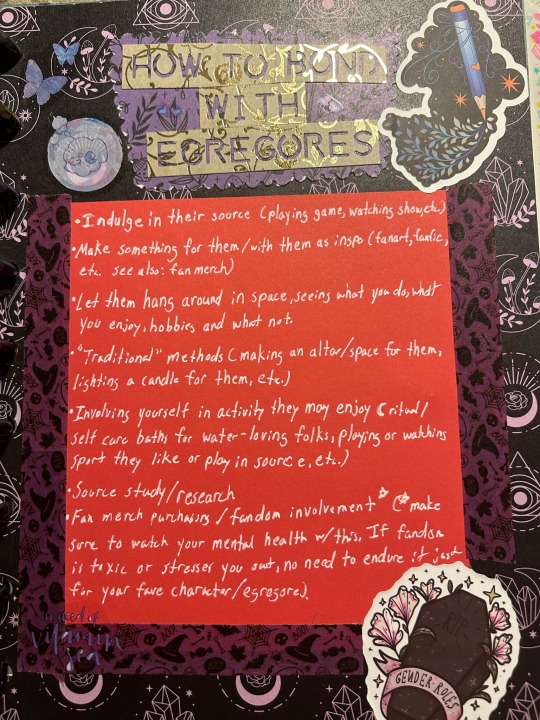


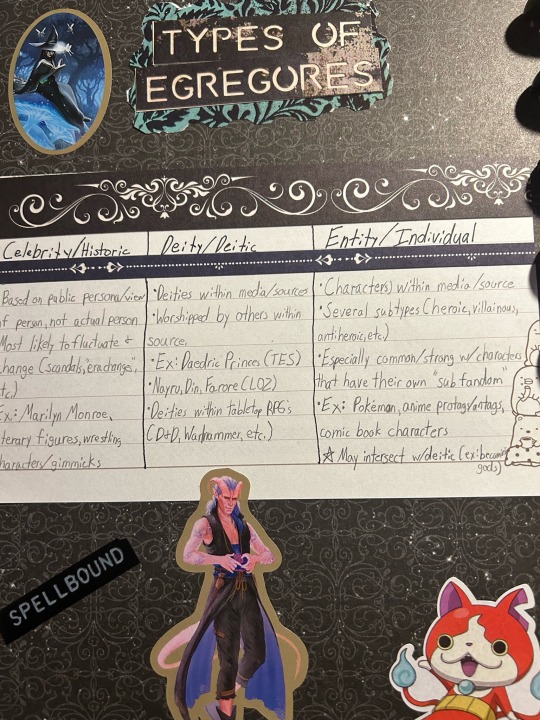
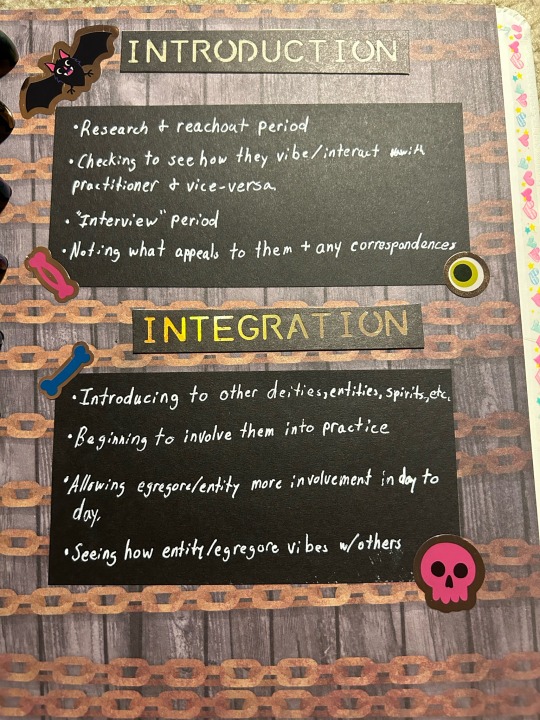
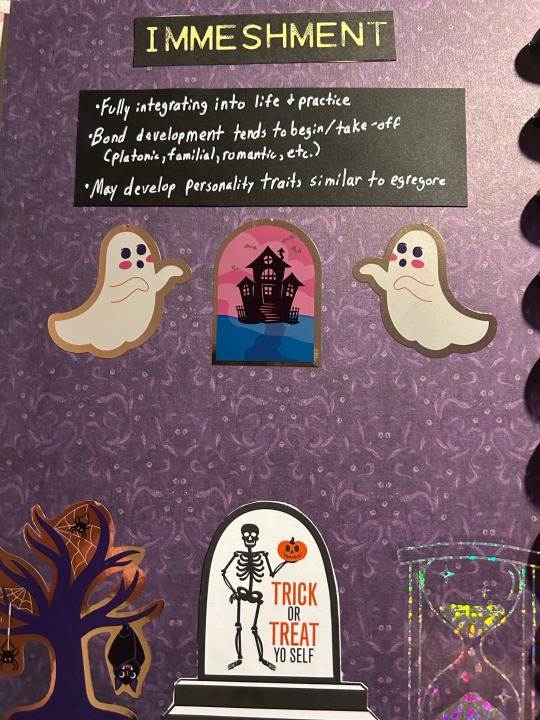
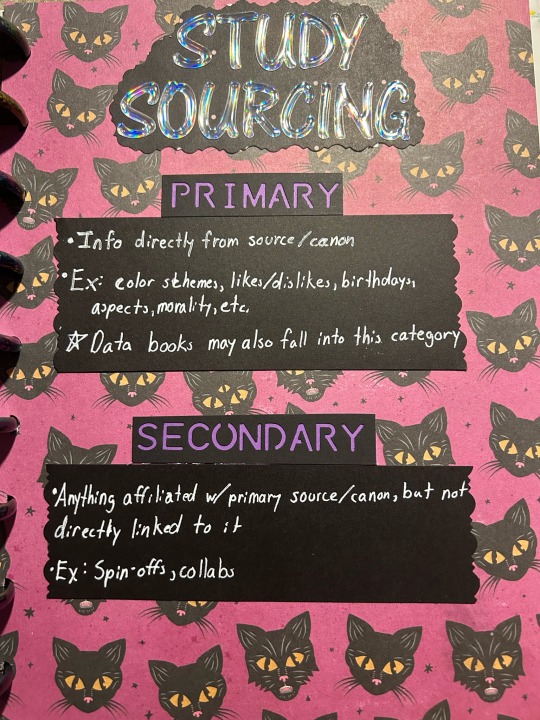
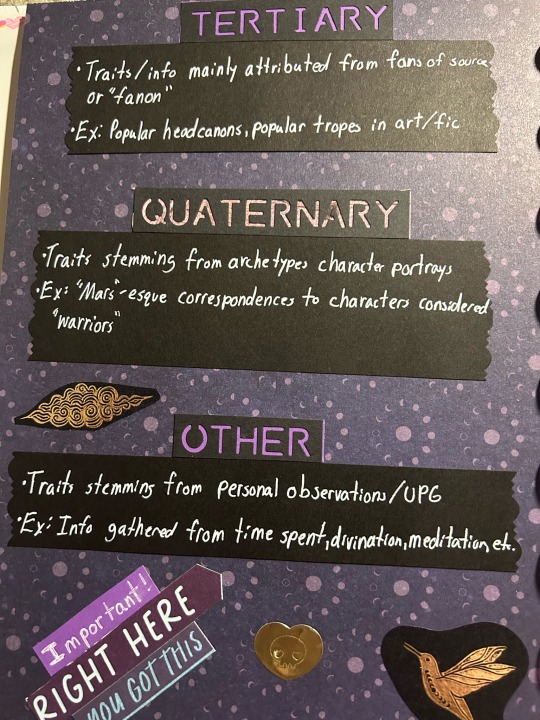
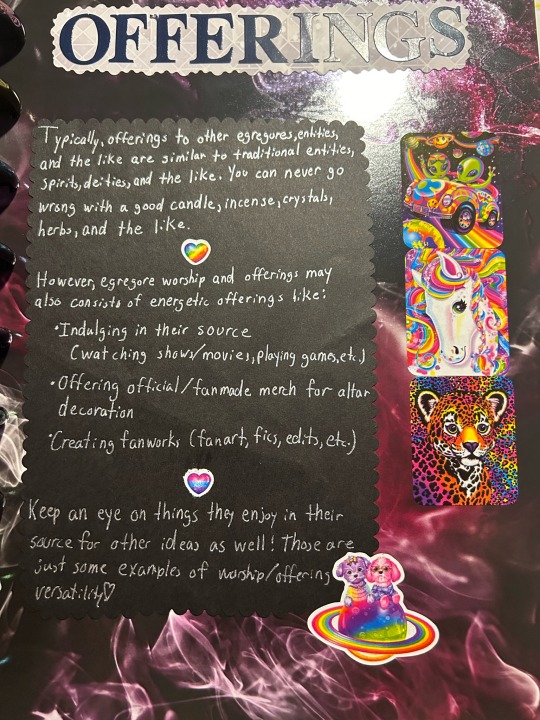
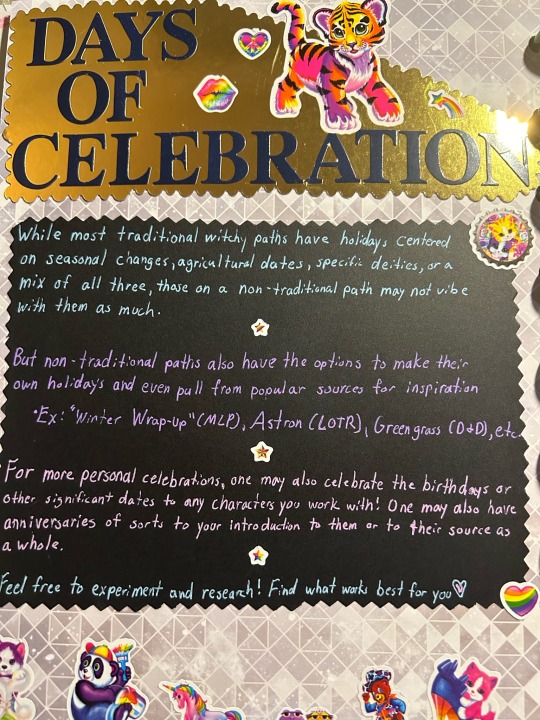
Pop Culture Grimoire Pages part 1 (continued in reblogs)
43 notes
·
View notes
Text
A thing I’ve been looking into lately is pop culture paganism/witchcraft. There are so many interesting ideas and ways of working to be found, and it’s really been a huge source of inspiration for my own path. One of the things I’ve done is made some shrines in a game! Stardew Valley was my game of choice, and I made some sheds to serve as shrines/temples. Take a look!

Shrine for Cernunnos
More under the cut!

Shrine for Nehalennia, Dutch Goddess of the Sea

Shrine for Baduhenna, Frisian deity of war, the forest, and magic, with ties to the Morrigán

Shrine for Liyesa, pop-culture Goddess of beauty

Shrine for the Gilded Three, pop-culture triple deity of creativity, fate, and stories.
#witch#witchcraft#pagan#deity#paganism#witchblr#altar#sacred space#cernunnos#nehalennia#baduhenna#liyesa#gilded three#pop culture magic#pop culture paganism#digital shrine#sdv#stardew valley
502 notes
·
View notes
Text
I'm listening to Welcome to Nightvale again, and for a second I thought "This would be fun for pop culture paganism" and then I thought, "I am in no way ready to deal with the chaos of All That"
43 notes
·
View notes